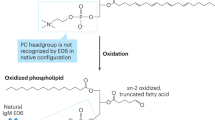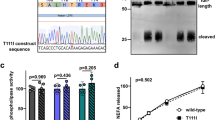Abstract
Lipoprotein-associated phospholipase A2 (Lp-PLA2), also known as platelet-activating factor acetylhydrolase, is a plasma enzyme that circulates bound to lipoproteins. The association between Lp-PLA2 and atherosclerosis is ambiguous, as it can both degrade and generate potentially damaging vasoactive molecules. In this article, we speculate that Lp-PLA2 associated with HDL might have cardioprotective properties, whereas the same enzyme bound to LDL might contribute directly to atherosclerosis at all stages, from lipoprotein oxidation to endothelial dysfunction, and plaque initiation and growth. Genetic and animal model studies give varying indications as to the contribution of Lp-PLA2 to atherogenesis and tend to support the view that higher Lp-PLA2 levels are cardioprotective. By contrast, a series of population studies point clearly to a positive association between plasma Lp-PLA2 levels or activity levels and risk of coronary heart disease or stroke. Typically, people with Lp-PLA2 levels in the highest quintile of the population have about a twofold greater risk than those in the lowest quintile. It is, perhaps, too early to introduce Lp-PLA2 as a population-wide biomarker for coronary heart disease risk; however, with accumulating evidence, it might find a place in a stepwise risk assessment of individuals who require more aggressive intervention to prevent vascular disease.
This is a preview of subscription content, access via your institution
Access options
Subscribe to this journal
Receive 12 print issues and online access
$209.00 per year
only $17.42 per issue
Buy this article
- Purchase on Springer Link
- Instant access to full article PDF
Prices may be subject to local taxes which are calculated during checkout


Similar content being viewed by others
References
Ross R (1999) Atherosclerosis: an inflammatory disease. N Engl J Med 340: 115–126
Libby P et al. (2002) Inflammation and atherosclerosis. Circulation 105: 1135–1143
Ridker PM et al. (2002) Comparison of C-reactive protein and low-density lipoprotein cholesterol levels in the prediction of first cardiovascular events. N Engl J Med 347: 1557–1565
Murakami M and Kudo I (2002) Phospholipase A2 . J Biochem (Tokyo) 131: 285–292
Hurt-Camejo E et al. (2001) Phospholipase A2 in vascular disease. Circ Res 89: 298–304
Stafforini DM et al. (1997) Platelet-activating factor acetylhydrolases. J Biol Chem 272: 17895–17898
Prescott SM et al. (2002) Molecular events in acute inflammation. Arterioscler Thromb Vasc Biol 22: 727–733
Chen CH (2004) Platelet-activating factor acetylhydrolase: is it good or bad for you? Curr Opin Lipidol 15: 337–341
Stafforini DM (1987) Human plasma platelet-activating factor acetylhydrolase. Association with lipoprotein particles and role in the degradation of platelet-activating factor. J Biol Chem 262: 4215–4222
Caslake MJ and Packard CJ (2003) Lipoprotein-associated phospholipase A2 (platelet-activating factor acetylhydrolase) and cardiovascular disease. Curr Opin Lipidol 14: 347–352
Elstad MR (1989) Platelet-activating factor acetylhydrolase increases during macrophage differentiation. A novel mechanism that regulates accumulation of platelet-activating factor. J Biol Chem 264: 8467–8470
Korth R (1993) Human platelets release a paf-acether: acetylhydrolase similar to that in plasma. Lipids 28: 193–199
Asano K et al. (1999) Cellular source(s) of platelet-activating-factor acetylhydrolase activity in plasma. Biochem Biophys Res Commun 261: 511–514
Tselepis AD et al. (1995) PAF-degrading acetylhydrolase is preferentially associated with dense LDL and VHDL-1 in human plasma. Catalytic characteristics and relation to the monocyte-derived enzyme. Arterioscler Thromb Vasc Biol 15: 1764–1773
Tselepis AD et al. (2001) N-linked glycosylation of macrophage-derived PAF-AH is a major determinant of enzyme association with plasma HDL. J Lipid Res 42: 1645–1654
Tselepis AD and Chapman MJ (2002) Inflammation, bioactive lipids and atherosclerosis: potential roles of a lipoprotein-associated phospholipase A2, platelet activating factor-acetylhydrolase. Atherosclerosis Suppl 3: 57–68
Marathe GK et al. (2003) Platelet-activating factor acetylhydrolase, and not paraoxonase-1, is the oxidized phospholipid hydrolase of high density lipoprotein particles. J Biol Chem 278: 3937–3947
Macphee CH (2001) Lipoprotein-associated phospholipase A2: a potential new risk factor for coronary artery disease and a therapeutic target. Curr Opin Pharmacol 1: 121–125
Skalen K et al. (2002) Subendothelial retention of atherogenic lipoproteins in early atherosclerosis. Nature 417: 750–754
Zhu Y (1997) Activation of ICAM-1 promoter by lysophosphatidylcholine: possible involvement of protein tyrosine kinases. Biochim Biophys Acta 1345: 93–98
Takahara N (1996) Lysophosphatidylcholine stimulates the expression and production of MCP-1 by human vascular endothelial cells. Metabolism 45: 559–564
Hakkinen T et al. (1999) Lipoprotein-associated phospholipase A2, platelet-activating factor acetylhydrolase, is expressed by macrophages in human and rabbit atherosclerotic lesions. Arterioscler Thromb Vasc Biol 19: 2909–2917
Hase M et al. (2002) Reduction in the extent of atherosclerosis in apolipoprotein E-deficient mice induced by electroporation-mediated transfer of the human plasma platelet-activating factor acetylhydrolase gene into skeletal muscle. Prostaglandins Other Lipid Mediat 70: 107–118
Quarck R et al. (2001) Adenovirus-mediated gene transfer of human platelet-activating factor-acetylhydrolase prevents injury-induced neointima formation and reduces spontaneous atherosclerosis in apolipoprotein E-deficient mice. Circulation 103: 2495–2500
Theilmeier G et al. (2000) HDL-associated PAF-AH reduces endothelial adhesiveness in apoE−/− mice. FASEB J 14: 2032–2039
Noto H et al. (2003) Human plasma platelet-activating factor acetylhydrolase binds to all the murine lipoproteins, conferring protection against oxidative stress. Arterioscler Thromb Vasc Biol 23: 829–835
Turunen P et al. (2005) Intravascular adenovirus-mediated lipoprotein-associated phospholipase A2 gene transfer reduces neointima formation in balloon-denuded rabbit aorta. Atherosclerosis 179: 27–33
Stafforini DM et al. (1996) Platelet-activating factor acetylhydrolase deficiency. A missense mutation near the active site of an anti-inflammatory phospholipase. J Clin Invest 97: 2784–2791
Yamada Y et al. (1998) Identification of the G994→T missense in exon 9 of the plasma platelet-activating factor acetylhydrolase gene as an independent risk factor for coronary artery disease in Japanese men. Metabolism 47: 177–181
Hiramoto M et al. (1997) A mutation in plasma platelet-activating factor acetylhydrolase (Val279→Phe) is a genetic risk factor for stroke. Stroke 28: 2417–2420
Kruse S et al. (2000) The Ile198Thr and Ala379Val variants of plasmatic PAF-acetylhydrolase impair catalytical activities and are associated with atopy and asthma. Am J Hum Genet 66: 1522–1530
Abuzeid AM et al. (2003) Association between the Ala379Val variant of the lipoprotein associated phospholipase A2 and risk of myocardial infarction in the north and south of Europe. Atherosclerosis 168: 283–288
Ninio E et al. (2004) Platelet-activating factor-acetylhydrolase and PAF-receptor gene haplotypes in relation to future cardiovascular event in patients with coronary artery disease. Hum Mol Genet 13: 1341–1351
Dada N et al. (2002) Lp-PLA2: an emerging biomarker of coronary heart disease. Expert Rev Mol Diagn 2: 17–22
Caslake MJ et al. (2000) Lipoprotein-associated phospholipase A2, platelet-activating factor acetylhydrolase: a potential new risk factor for coronary artery disease. Atherosclerosis 150: 413–419
Packard CJ et al. (2000) Lipoprotein-associated phospholipase A2 as an independent predictor of coronary heart disease. West of Scotland Coronary Prevention Study Group. N Engl J Med 343: 1148–1155
Blake GJ et al. (2001) A prospective evaluation of lipoprotein-associated phospholipase A2 levels and the risk of future cardiovascular events in women. J Am Coll Cardiol 38: 1302–1306
Ballantyne CM et al. (2004) Lipoprotein-associated phospholipase A2, high-sensitivity C-reactive protein, and risk for incident coronary heart disease in middle-aged men and women in the Atherosclerosis Risk in Communities (ARIC) study. Circulation 109: 837–842
Blankenberg S et al. (2003) Plasma PAF-acetylhydrolase in patients with coronary artery disease: results of a cross-sectional analysis. J Lipid Res 44: 1381–1386
Koenig W et al. (2004) Lipoprotein-associated phospholipase A2 adds to risk prediction of incident coronary events by C-reactive protein in apparently healthy middle-aged men from the general population: results from the 14-year follow-up of a large cohort from southern Germany. Circulation 110: 1903–1908
Oei HH et al. (2005) Lipoprotein-associated phospholipase A2 activity is associated with risk of coronary heart disease and ischemic stroke: the Rotterdam Study. Circulation 111: 570–575
Rizos E et al. (2005) Lipoprotein-associated PAF-acetylhydrolase activity in subjects with the metabolic syndrome. Prostaglandins Leukot Essent Fatty Acids 72: 203–209
Iribarren C et al. (2005) Association of lipoprotein-associated phospholipase A2 mass and activity with calcified coronary plaque in young adults: the CARDIA study. Arterioscler Thromb Vasc Biol 25: 216–221
Brilakis ES et al. (2005) Association of lipoprotein-associated phospholipase A2 levels with coronary artery disease risk factors, angiographic coronary artery disease, and major adverse events at follow-up. Eur Heart J 26: 137–144
Kudolo GB et al. (1997) Plasma PAF acetylhydrolase in non-insulin dependent diabetes mellitus and obesity: effect of hyperinsulinemia and lovastatin treatment. J Lipid Mediat Cell Signal 17: 97–113
Tsimihodimos V et al. (2002) Atorvastatin preferentially reduces LDL-associated platelet-activating factor acetylhydrolase activity in dyslipidemias of type IIA and type IIB. Arterioscler Thromb Vasc Biol 22: 306–311
Winkler K et al. (2004) Fluvastatin slow-release lowers platelet-activating factor acetyl hydrolase activity: a placebo-controlled trial in patients with type 2 diabetes. J Clin Endocrinol Metab 89: 1153–1159
Tsimihodimos V et al. (2003) Fenofibrate induces HDL-associated PAF-AH but attenuates enzyme activity associated with apoB-containing lipoproteins. J Lipid Res 44: 927–934
Eisaf M and Tselepis AD (2003) Effect of hypolipidemic drugs on lipoprotein-associated platelet activating factor acetylhydrolase. Implication for atherosclerosis. Biochem Pharmacol 66: 2069–2073
Macphee CH et al. (1999) Lipoprotein-associated phospholipase A2, platelet-activating factor acetylhydrolase, generates two bioactive products during the oxidation of low-density lipoprotein: use of a novel inhibitor. Biochem J 338: 479–487
Carpenter KL et al. (2001) Inhibition of lipoprotein-associated phospholipase A2 diminishes the death-inducing effects of oxidised LDL on human monocyte-macrophages. FEBS Lett 505: 357–363
Leach CA et al. (2001) Lipoprotein-associated PLA2 inhibition: a novel, non-lipid lowering strategy for atherosclerosis therapy. Farmaco 56: 45–50
Boyd HF et al. (2002) Potent, orally active inhibitors of lipoprotein-associated phospholipase A2: 1-(biphenylmethylamidoalkyl)-pyrimidones. Bioorg Med Chem Lett 12: 51–55
Anderson KM (1991) Cardiovascular disease risk profiles. Am Heart J 121: 293–298
Author information
Authors and Affiliations
Corresponding author
Ethics declarations
Competing interests
The authors declare no competing financial interests.
Rights and permissions
About this article
Cite this article
Caslake, M., Packard, C. Lipoprotein-associated phospholipase A2 as a biomarker for coronary disease and stroke. Nat Rev Cardiol 2, 529–535 (2005). https://doi.org/10.1038/ncpcardio0321
Received:
Accepted:
Issue Date:
DOI: https://doi.org/10.1038/ncpcardio0321
This article is cited by
-
Predictive value of Lp-PLA2 for coronary artery disease in type 2 diabetes mellitus patients: an observational study
International Journal of Diabetes in Developing Countries (2024)
-
Increased Lipoprotein-associated phospholipase A2 activity portends an increased risk of resistant hypertension
Lipids in Health and Disease (2016)
-
The inhibition of lipoprotein-associated phospholipase A2 exerts beneficial effects against atherosclerosis in LDLR-deficient mice
Acta Pharmacologica Sinica (2011)
-
Biology of Platelet-activating Factor Acetylhydrolase (PAF-AH, Lipoprotein Associated Phospholipase A2)
Cardiovascular Drugs and Therapy (2009)
-
Reducing oxidized lipids to prevent cardiovascular disease
Current Treatment Options in Cardiovascular Medicine (2008)



